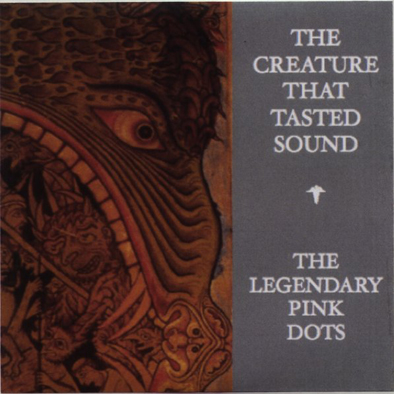 This is the kind of release that easily could fall through the cracks, as it is merely one humble CDR amidst a daunting slew of higher profile reissues, remasters, and Edward Ka-Spel solo efforts.  On one hand, that makes some sense, as much of the material is very abstract and atmospheric.  On the other hand, the narrative title piece captures Ka-Spel at his most bizarre and compelling and should not be missed by anyone interested in his work.
This is the kind of release that easily could fall through the cracks, as it is merely one humble CDR amidst a daunting slew of higher profile reissues, remasters, and Edward Ka-Spel solo efforts.  On one hand, that makes some sense, as much of the material is very abstract and atmospheric.  On the other hand, the narrative title piece captures Ka-Spel at his most bizarre and compelling and should not be missed by anyone interested in his work.
Ka-Spel's bizarre spoken-word tale of the titular being begins the album in brilliant fashion, unfolding the story of a hapless space creature being studied by a doctor.  Content-wise, it almost resembles a children's story, as nothing particularly disturbing ever happens and the nurses all have silly names (also, Ka-Spel gamely provides the female voices himself).  In execution, however, the base material is transformed into something truly gripping and more than a little disturbing.  Much of the credit goes to the band, who bolster Ka-Spel's curious story with simmering ambiance, hollowly shuddering guitars, and timely eruptions of entropy.  However, I suspect Edward could have even made it work without any accompaniment at all, as his deep voice sounds so intense, grave, and insistent that it seems impossible to turn my attention away from it no matter how many times I hear the story.  Also, the pacing is extremely effective and the humor drolly deadpan.  Ka-Spel has rarely been more magnetic and he and the band do not make a single misstep.
Unfortunately, opening in such stellar fashion sets the bar unfairly high for the rest of the album and it cannot help but fall somewhat short.  Nevertheless, most of it is still remarkably good.  The 17-minute drone epic "Premonition 34" is enjoyable and appropriately hallucinatory, culminating in a very satisfying and noisy catharsis.  Then, the much shorter "Poor Louis" sounds like I am hearing a distant free-jazz concert while rapidly dying from a drug overdose, which is certainly a neat and novel experience (and it even manages to end in supremely creepy and unnerving fashion).  Even the album's weakest piece, the closing "29.12.11," is pretty impressive, unleashing a harsh torrent of electronic and field recording chaos over a bludgeoning and insistent rhythm.
I am amazed that an album this impressive is only being released as a CDR, but I suspect that is more due to financial constraints rather than the band feeling like this was somehow a minor effort.  Granted, there are not any real "songs" here, but 18 minutes of sustained excellence is appealing no matter what shape it takes. Additionally, I found this is to be a lot more listenable than many of LPD's more formal and celebrated efforts.  The fact that the Dots can casually and quietly release something this great reminds me yet again that they are among the most woefully under-appreciated bands and that they are always capable of releasing great material, even after 3+ decades.
Samples:
 
 
Read More

